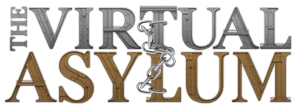I'm not sure where I'm yet but I'm at a very similar pace to yours. I set my mining deck to 15 cards/day maximum (more and I'm literally unable to comprehend anything anymore) but I usually mine a bit less. I do suggest you review everything you have and reduce instead the new words per day, because you'll be messing with anki's algorithm if you're not reviewing the cards when they're due. Do consider you'll be able to pick up quite a few words from context after a while, and many more will be decently clear from the kanji alone, so you don't really have to rely on the numbers. Plus, you're not getting tested on all of the words together but a part of them (some of which you're bound to not remember, or you might get lucky and get the words you have ironed out). I think reading comprehension and listening might be more important, so I suggest you follow yuckyyaki's advice and try to understand the concept of what you're immersing with.For those of you that have actually learned a good bit of Japanese (around N2-N3), how many new words per day would you suggest? Right now, I've got the app I use (Renshuu) set to fifteen new words per day, and then I'll review about a hundred. Might increase the latter, and just review everything I have, but that would end up taking a lot of time after a while.
If I can keep this up long-term (doubtful, but I'll try), I figure I'll be N1 in 2-3 years. 330*15=4950, assuming I skip about a month's worth of days per year. N1 is 10000 words and 2000 kanji.
On a related note, would you say that Japanese gets easier to learn as you get further into it? It feels like it would, since you can start actually reading/watching media after you learn a certain amount, which will allow you to learn new words and phrases through context.
I do think the studying gets noticeably easier the more you watch a same show, and even in general the more you study. You pick up stuff easier and are able to parse faster. At a certain point (this happens to many when studying english) you don't even notice you're studying but you're just enjoying yourself. Of course grammar books are still gonna be a pain, much like they are in your L1.
Btw if you're on FSRS (I've explained how it works in my previous posts) you can reduce your desired retention to lower your workload organically while still doing all the due cards.

